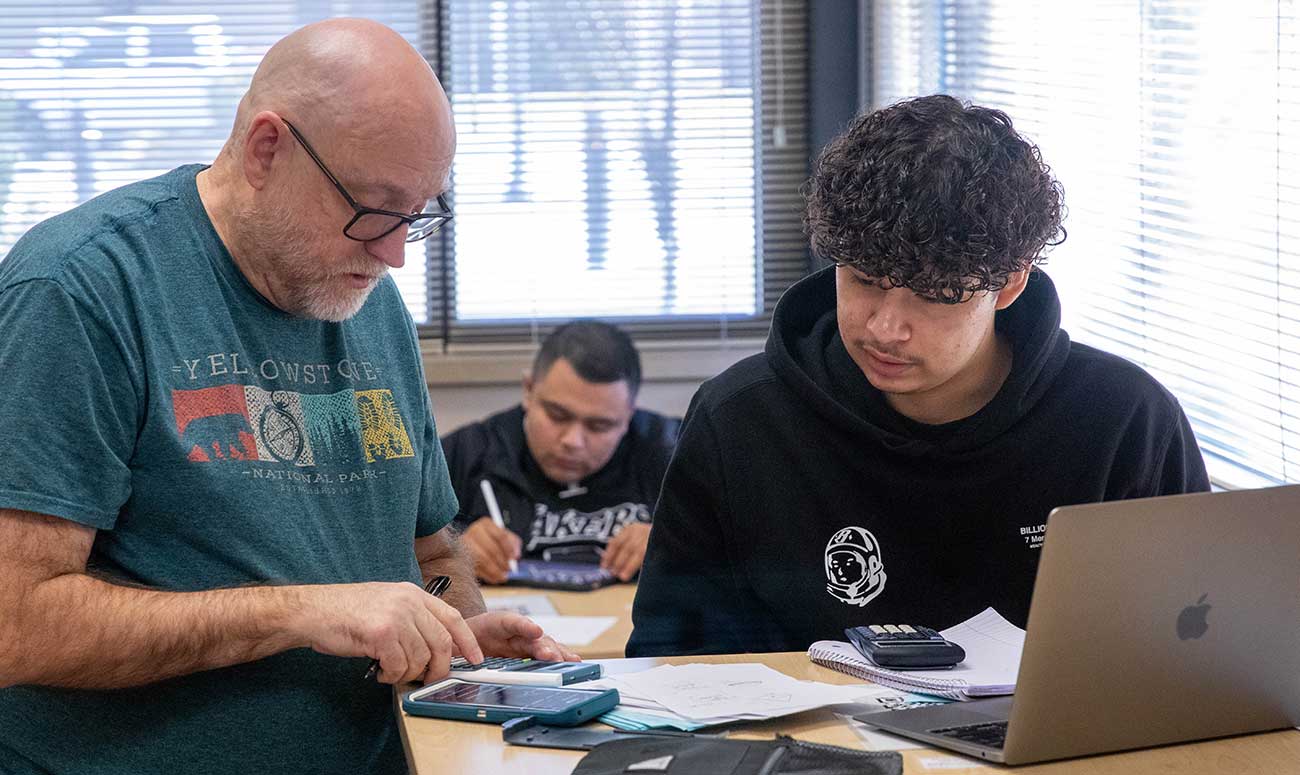Math department fosters student-led instruction
In each of Panyada Sullivan’s math classes, she notices students who could benefit from extra support beyond regular class hours to grasp the material effectively.
That’s a problem with other work and family obligations students often have.
“Many of those students have conflicts and can’t come into my instructor hour,” says Sullivan.
In search of a solution, Sullivan teamed with fellow instructor Anna Pascoe to create peer-to-peer tutoring opportunities for the college’s math students.
“The idea to provide supplemental instruction, utilizing peer-led group study to help students succeed, is one that was on our team’s radar and something we felt we could model after a national program to benefit students at Yakima Valley College,” says Pascoe.
When grant funds became through YVC’s UDEAL grant, the department decided to use them to help improve student learning.
The Math Department initiative is just one example that highlights how YVC faculty are enhancing the learning experience for students. YVC’s strategic plan emphasizes innovation in teaching, and professional development programs such as ESCALA and TILT (Transparency in Teaching and Learning) provide resources for faculty to elevate instructional quality and promote active student engagement in learning.
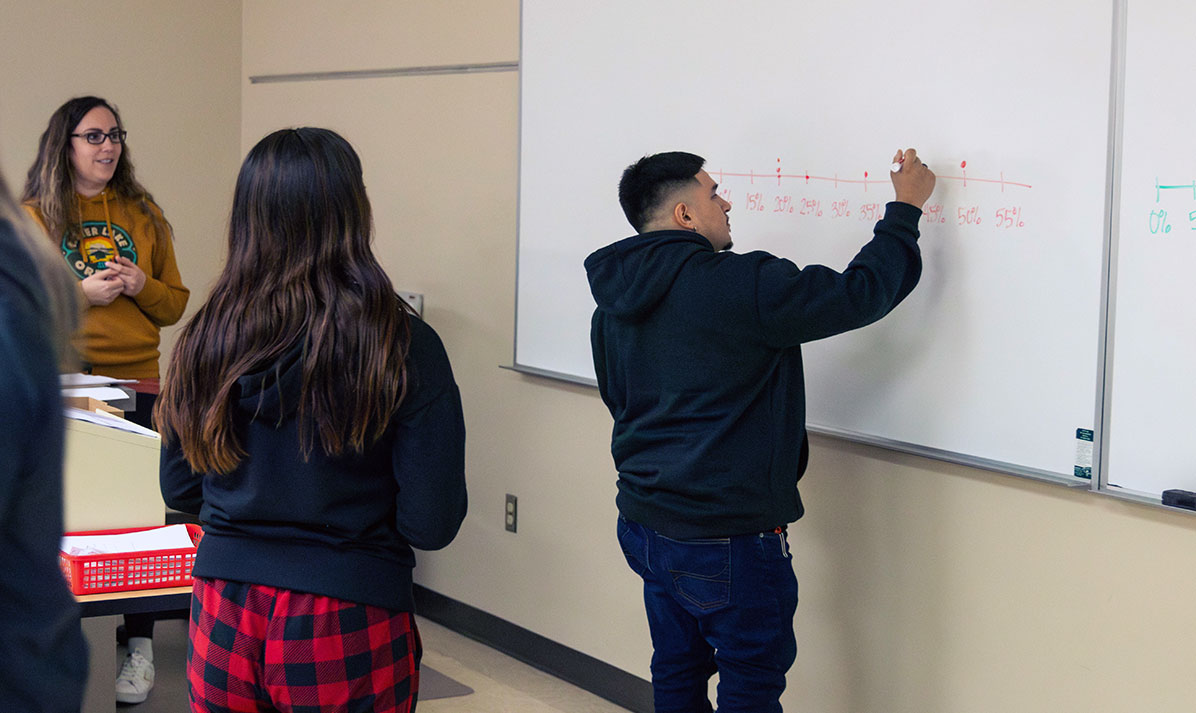
According to YVC Vice President of Instruction and Student Services Jennifer Ernst, YVC stands at the forefront of educational innovation, where faculty excellence is not just a principle but a living, breathing commitment to student success.
“In the ever-evolving landscape of education, our faculty at Yakima Valley College embody a spirit of innovation and adaptability,” said Ernst. “Their dedication to creating impactful changes in our classrooms is a testament to their commitment to student success.”
For Pascoe, who took a leadership role in the peer tutoring initiative, finding the right student is key and requires a commitment of mentorship from faculty.
After identifying courses where supplemental instruction would be beneficial, Pascoe works directly with students to ensure success.
“We start by recruiting students, interviewing them and getting them to apply,” said Pascoe. Once chosen as a peer tutor, students observe the course that they’ll support, attending most, if not all, class sessions to fully immerse themselves in the course material. Students also meet with the instructor to help get a feel for their style of teaching and needs for supplemental sessions. Students then work with faculty to organize and plan activities for the peer-instruction.
Currently four faculty are participating with the supplemental instruction initiative: Pascoe, Sullivan, Michal Ramos and Nat Wall. Each faculty member receives a stipend to support their work.
“Students who feel more connected are more likely to be successful.”
— Anna Pascoe, Math Instructor
Sullivan, one of the first to implement supplemental instruction, is participating for the third quarter and sees first-hand the benefits it’s having on her students.
“Student leaders have more experience in course content and have higher content knowledge [of] math,” said Sullivan. “They observe how faculty approach content and deliver that content to the students, so that they can look at the activity to see how long it will take and the most efficient way [to complete it]. Then they can bring that knowledge and experience and lead the student.”
Pascoe works with students throughout the quarter to help them feel connected to their class, faculty and college community.
“If students are able to work with their peers to engage with content, they feel more connected to their classmates and the college,” says Pascoe.
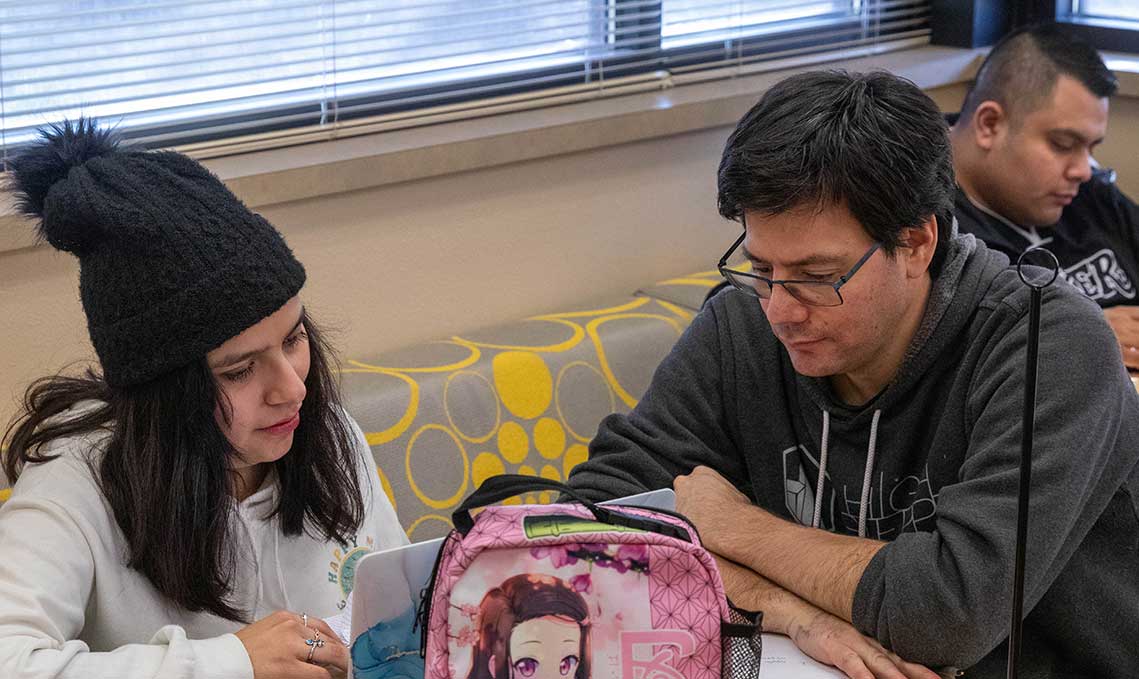
Sullivan notes that during fall quarter she observed students coming more consistently to the student-led workshops.
“If it wasn’t helping them, then they wouldn’t be coming back,” she said.
For student Lorenzo Sanchez, supplemental instruction played a key role in his success.
“I actually took a math class in the spring of 2023 and I needed extra time to work on homework,” said Sanchez, “but, since I work full-time, my schedule would not allow me to attend tutoring, office hours or the Math Center.”
When his instructor announced supplemental instruction opportunities that fit within his busy schedule, Sanchez was eager to participate — attending every session and getting needed help to complete his assignments.
“The program gave me the opportunity to grow as a person, student and employee gaining skills and characteristics needed in a day-to-day life.”
— Student Lorenzo Sanchez
Thanks to that help, this winter quarter, he had an opportunity to give back to other math students as a peer leader.
“I felt I could share the strategies that helped me successfully complete the course. I know not everyone learns the same way or at the same speed and I think I have the patience to walk someone through the steps of doing something. I want to expand my communication and teamwork skills.”
Student Gavin Moss, who originally was interested in becoming a student leader for work experience and financial support, quickly developed a passion for helping others thanks to the supplemental instruction initiative.
“I had struggled with certain math concepts in the past, and I firmly believe that I would not have gotten a decent grade if it wasn’t for the time I spent studying with my friend in the Math Center. Student leadership has also strengthened my existing mindset of helping others and has given me confidence that I can lead, teach and guide others toward success,” says Moss.
“Ensuring equity in the classroom is sometimes a challenge due to time limitations,” says Sullivan. “ESCALA provides tools that highlight what is missing in the classroom but students who need more help are often left out. Student leaders, who already know content from the faculty and classroom, provide necessary support to these students and fills equity gaps in the classroom.”
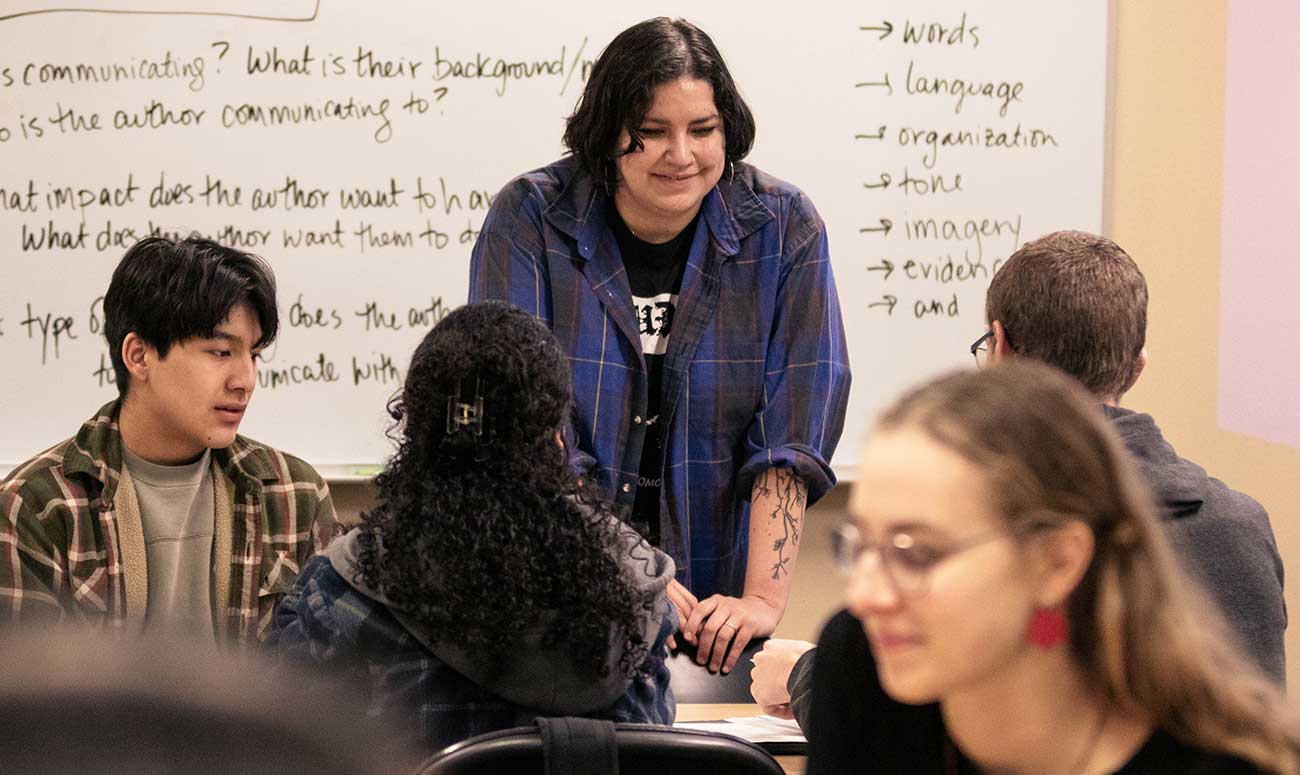
English department focuses on anti-racist work
When the State Board for Community and Technical Colleges received a grant to promote antiracist writing assessment across the state system, YVC was one of seven schools selected to participate.
YVC’s work, which began in 2021, was guided by principles from scholar Asao Inoue’s book “Antiracist Writing Assessment Ecologies: Teaching and Assessing Writing for a Socially Just Future” and encouraged faculty to think holistically about the project.
“We had to consider the ecology of English 101 and what we all do as individuals, as a department, within our larger institution, and in the context of the practice and history of our own discipline,” says Olivia Hernández.
While the department has taken great strides, more work still needs to be done.
“By revising our teaching practices and our assessment ecologies, we are increasing equity and access for all students at YVC,” says Hernández.
Hernández is also developing an open Canvas page to share with faculty and staff across the college to share resources and materials about culturally responsive and antiracist pedagogy and antiracist assessment ecologies to make this work accessible across the college and across different disciplines.
TILT cohorts inspire
By participating in TILT cohorts composed of instructors across the college, faculty like Pharmacy Technology Instructor Stephanie O’Brine gain insight and skills to help make improvements to their individual courses and programs.
This year, O’Brine was eager to make improvements to AH 105 Introduction to Pharmacology, an online only course.
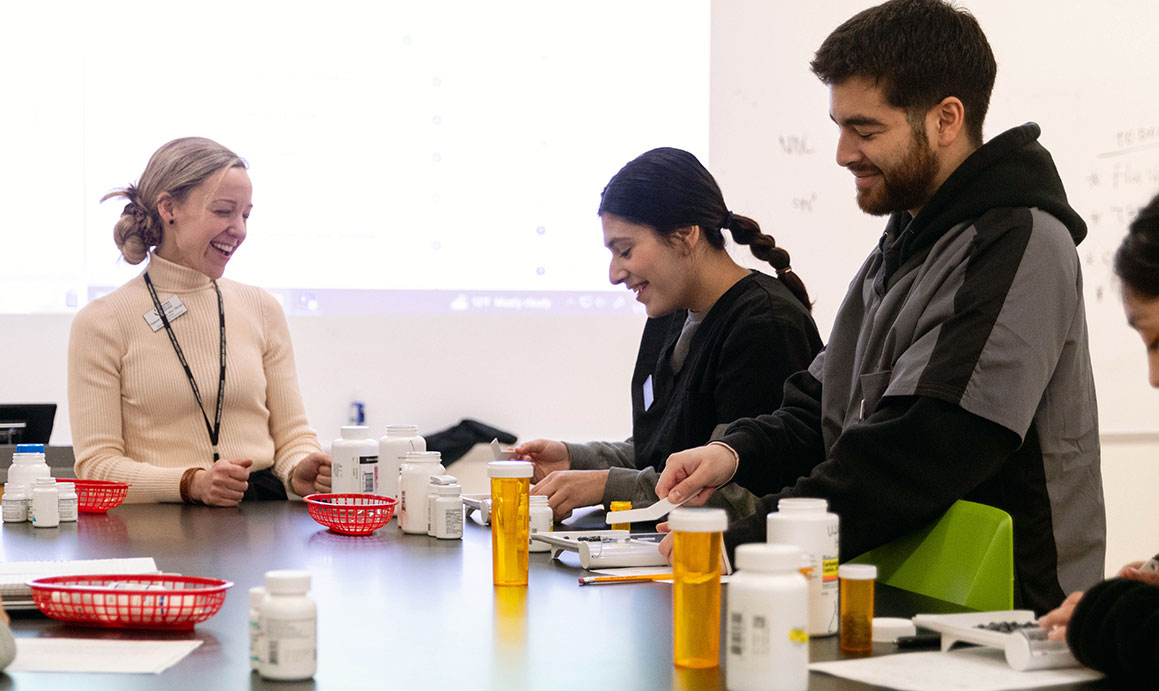
Changes to the course started by O’Brine making sure links and documents were easily accessible for students with disabilities. She then redesigned weekly discussion and written assignments in Canvas in hopes to clarify the purpose, task and grading criteria.
According to O’Brine, what she learned through TILT helped her better articulate to students the purposes for various assignments.
“This reason had to be deeper than to just earn points or a grade,” said O’Brine. “It made me reevaluate the homework I was assigning to be sure that it supported student learning that not only applied to the course, but something they could perhaps use and apply outside of the course.”
O’Brine plans to continue modifying her courses in the coming months.
“Sometimes you want to improve a course, but don’t know exactly how or where to begin,” says O’Brine. “I’ve been taking what I learned from TILT and applying it to all my courses. It’s also been rewarding to look and provide more opportunities to communicate with students. Every quarter, students help me be a better teacher. I’m so thankful for our students and their feedback.”
Story by Stefanie Menard, AA-DTA ’05, communications consultant. Photos by Matthew Barton, graphic designer/multimedia content producer.
